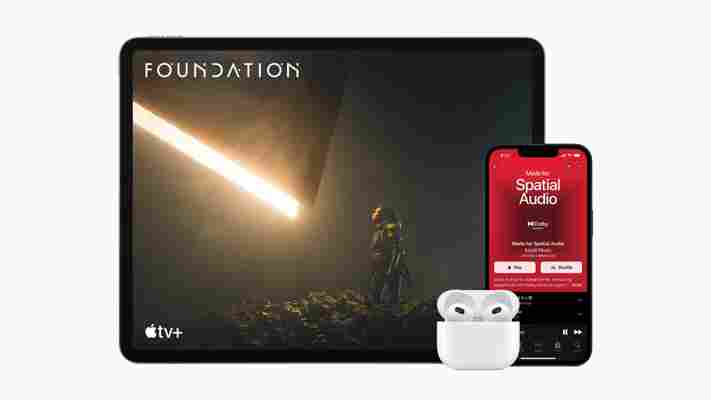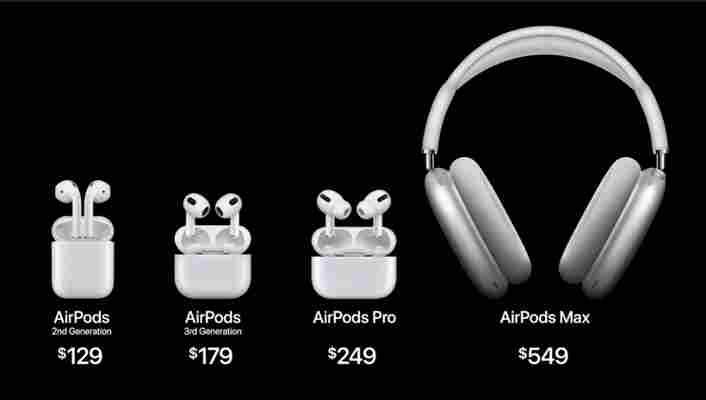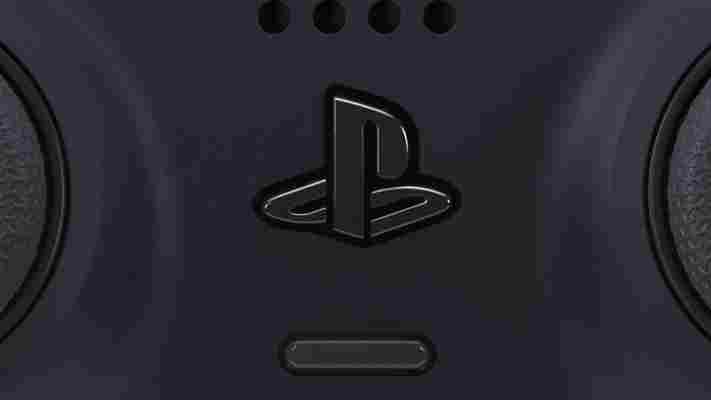A VPN service frequently used by cybercriminals to launch ransomware attacks and spread malware online has been taken down as part of a joint operation between Europol and law enforcement authorities from 10 different countries.
On January 17, disruptive actions took place in a coordinated manner in Germany, the Netherlands, Canada, the Czech Republic, France, Hungary, Latvia, Ukraine the US and the UK as law enforcement from each country seized or disrupted 15 servers used to host VPNLabet.
Europol's European Cybercrime Centre ( EC3 ) provided support for the operation through its Analysis Project 'CYBORG' which organized over 60 coordination meetings and three in-person workshops while also providing both analytical and forensic support.
Head of the EC3, Edvardas Šileris explained in a press release how data gathered in this operation will be used to help Europol find its next target, saying:
“The actions carried out under this investigation make clear that criminals are running out of ways to hide their tracks online. Each investigation we undertake informs the next, and the information gained on potential victims means we may have pre-empted several serious cyberattacks and data breaches.”

A VPN for cybercriminals
First established in 2008, VPNLabet provided VPN services based on OpenVPN and utilized 2048-bit encryption to provide its customers with online anonymity for as little as $60 per year. In addition to a regular VPN, the site also provided a double VPN where internet traffic would pass through multiple VPN servers before arriving at its destination.
According to Europol, law enforcement first took interest in VPNLab after multiple investigations revealed that cybercriminals were using the service for illicit activities including malware distribution. Meanwhile, other cases showed that the service was used to set up infrastructure and communications behind ransomware campaigns. In a press release , Ukraine's cyberpolice revealed that VPNLab was used in at least 150 ransomware attacks.
While VPNLab has now been shut down, the owners and operators of the service have yet to be identified, charged or arrested. However, data seized from the service's servers could hold valuable evidence on who was behind the operation.
At the same time, law enforcement plans to comb through VPNLab's customer data with the aim of identifying additional ransomware affiliates .
We've also featured the best endpoint security software and best identity theft protection
Via BleepingComputer
Are the AirPods 3 noise-cancelling? Apple's new earbuds explained
If it feels like you've been waiting ages for the AirPods 3 to launch, that's because... well, you have. We've been hearing rumors about Apple's latest true wireless earbuds pretty much since their predecessors launched in 2019 – and now they've finally arrived.
The Apple AirPods (3rd generation) were announced on October 18, 2021 at the brand's Unleashed event , which also saw new MacBooks and updated colors for the HomePod mini unveiled.
Coming with a bevy of cool new features including Spatial Audio , custom-built drivers, and a longer battery life, the AirPods 3 are a big improvement upon the 2019 AirPods .
There are a lot of new specs to get your head around, which is why we've put together this quick guide to answer all the questions you may have about the AirPods 3.
So, if you don't have time to trawl through the AirPods (3rd generation) lengthy spec sheet, read on for the top things you should know about Apple's new wireless earbuds .

How much do the AirPods 3 cost?
The Apple AirPods 3 cost $179 / £169 / AU$279, and are available to preorder from the Apple Store now – though they don't officially go on sale until October 26.
That's a bit pricier than the AirPods 2 cost when they launched back in 2019, but the new AirPods come with a wireless charging case as standard – that's something you had to pay extra for with the previous AirPods.
If you're planning on selling your old AirPods to fund your next purchase, be sure to read our guide on how to reset AirPods .
Do the AirPods 3 come with noise cancellation?
No, they don't. Unlike the AirPods Pro , the new AirPods probably won't be able to block out a significant amount of environmental noise.
You will get some passive noise cancellation from the simple act of placing the earbuds against your ear canal, but they won't use their inbuilt microphones to feedback the clever anti-noise frequencies that are required for active noise cancellation.
The passive noise cancellation probably won't be super effective, either. That's because the AirPods 3 are designed to rest against your ear canal, unlike earbuds with silicone or memory foam eartips, which sit further into your ears, creating a good seal against the noise of the outside world.
So, if noise cancellation is a dealbreaker, you're better off buying the AirPods Pro, or looking at other noise-cancelling earbuds like the Sony WF-1000XM4 or the Bose QuietComfort Earbuds .

Do the AirPods 3 support Spatial Audio?
Yes – that's a big selling point of the new AirPods. Like the AirPods Pro and the AirPods Max , the new third-gen AirPods are compatible with Apple's immersive sound technology.
This technology applies directional audio filters to content in 5.1, 7.1, and Dolby Atmos , making it sound as though music or film soundtracks are coming at you from every angle.
Using gyroscopes and accelerometers built into the AirPods 3 to measure your head movements, the Spatial Audio tech then ensures that the sound is always coming from the correct direction.
Can I still buy the AirPods 2?
Yes, you can – the 2019 AirPods haven't been discontinued. Instead, they've been given a permanent price cut, making them an appealing option for anyone on a strict budget.
The AirPods 2 now cost $129 / £119 / AU$219 . They previously cost $159 / £159 / AU$249 with the standard charging case, and $199 / £199 / AU$319 with the Wireless Charging Case bundled in.
You can still buy the Wireless Charging Case separately for $79 / £79 / AU$129 - but now that the bundle is no longer available, this is more expensive than just buying the new AirPods 3.

What is the difference between the AirPods 2nd and 3rd generations?
While they look similar, there are lots of differences between the AirPods 3 and their predecessors.
Firstly, they come with a new design that looks more similar to the AirPods Pro, with shorter stems that feature force sensors you can squeeze to control your music and phone calls. The AirPods 3 also sport an IPX4 water resistance rating, making them for suitable for use while working out, and a skin-detect sensor that automatically stops your music when the AirPods sense that they're not in your ears.
They also contain new drivers, which are designed for low distortion, as well as support for Spatial Audio – and overall they offer a much better audio performance as well. Unlike the AirPods (2019), the new AirPods come with Adaptive EQ, which tailors the sound of your music based on how they fit in your ears.
While the 2019 AirPods offered 24 hours of playback in total (that's about four from the earbuds and a further 20 hours from the charging case), the new AirPods 3 offer a 30-hour max battery life (though that drops back down to 24 if you're using Spatial Audio). They also come with a wireless charging case (that's MagSafe-compatible), which is something you had to pay extra for with the AirPods 2.
Which are the best AirPods?
Even though the AirPods 3 are excellent, our pick for the best AirPods are still the AirPods Pro, which offer a great audio performance, a secure fit, and good noise cancellation.
Still, the AirPods 3 come with a superior battery life (30 hours as opposed to 24 hours), and they're cheaper, too.
While the AirPods Pro are the current best all-rounders, the AirPods Max are the best Apple headphones when it comes to pure audio quality. These over-ear headphones boast an incredible soundstage, as well as a unique design that sets them apart from other wireless headphones .
I was wrong about the PS5 DualSense controller, and I couldn’t be happier
It’s never easy to eat a slice of humble pie, but I’m happy to admit I was wrong about the PS5 DualSense controller . Sony’s innovative new pad is comfortably my favorite aspect of the PlayStation 5 – by some distance. But I’m still kind of shocked that developers have embraced it so readily.
You see, I was convinced that the majority of the DualSense controller’s fancy features would be overlooked. And with good reason. There’s been a clear pattern in previous console generations where third-party developers, particularly on multiplatform games, simply choose to ignore specific console features to save time and money.
After all, the PS3’s Sixaxis accelerometer, which is still present in the DualSense, was barely used outside a handful of games. On PS4 , the DualShock’s touchpad essentially became a giant oversized menu button a few months into the generation. Nintendo Switch ’s HD Rumble was all but ignored after 1-2-Switch released, and on Xbox One , the controller’s impulse triggers were criminally overlooked for years, something that’s thankfully been rectified on Xbox Series X .
I was confident, then, that we’d only see Sony’s first-party studios spending the time to get the most out of the DualSense’s haptic feedback and adaptive triggers – but I’m delighted that’s not been the case. Far from it.
Super support

Practically every game on the PS5 includes some sort of DualSense implementation, and it’s yet to feel like a gimmick to me. Yes, it can often be subtle, but the DualSense’s features make a tangible difference to my overall enjoyment whenever I play games on PS5. I love the satisfying feedback you get every time you fire a gun in Call of Duty: Vanguard or how you can feel Jesse Faden’s footsteps in Control as you move around. It's just something I really miss when playing on other consoles.
When it comes to Sony’s first-party output, Astro’s Playroom , Returnal , and Ghost of Tsushima: Director’s Cut are prime examples of just how fantastic the DualSense controller can be – and those games would be worse off without the magic found inside Sony’s pad. But still, I never expected to see third-party developers rally behind the DualSense so strongly.
Sensual feelings

So why, then, has the DualSense seen such great support? Well, we already know that Sony has made it easier for studios to implement features like haptic feedback thanks to a variety of presets. But I think what’s clear to developers (and gamers) is that the DualSense genuinely adds an extra dimension to the feel of a game that’s worth exploring.
I’ve found myself picking up several third-party games on PS5 simply because of the promise of DualSense implementation, as it's a unique selling point over the competition.
If you've yet to feel the magic of the DualSense first hand, please start with Astro's Playroom. Feeling the sensation of skating across ice, firing a machine gun, or jumping into a pool of water for the very first time is one of those gaming moments that will stay with you forever – like when you first struck a tennis ball in Wii Sports or saw a game running in HD resolution (hey, Call of Duty 2).
The fact that developers are continuing to utilize the PS5 DualSense controller's features so readily proves that haptic feedback and adaptive triggers are a substantial addition to gaming. And I sincerely hope they make the jump to future PlayStation consoles.